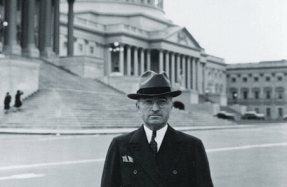THE BATTLE OF BARKING CREEK



WHEN BRITAIN DECLARED WAR ON GERMANY ON SEPTEMBER 3, 1939, THE NEWS WAS GREETED WITH EXCITEMENT AT THE HOME OF NO. 74 “TIGER” SQUADRON AT RAF HORNCHURCH, EAST OF LONDON..
Industry swiftly supplanted emotion as airmen and ground crews began to fill thousands of sandbags to create blast-proof dispersals for the squadron’s Supermarine Spitfires. One pilot absent from the hard labor was Pilot Officer John Freeborn, a 19-year-old who spoke his mind with a confidence that belied his tender years. As squadron adjutant, Freeborn excused himself from sandbag duty on account of the growing pile of paperwork on his desk.
The next day there was a squadron scramble that proved to be a false alarm. There were no Luftwaffe bombers approaching the coast, so the nervous Royal Air Force pilots sat in the late summer sunshine and waited for what they believed was an imminent enemy attack.
At 0645 hours on September 6 there was another scramble and Flight Lt. Adolph Malan, nicknamed “Sailor” because of his stint as a naval cadet, led Red Section through a thick ground mist into a clear blue sky. Yellow Section—Flying Officer Vincent “Paddy” Byrne; his no. 2, Acting Flying Officer John Freeborn; and Sgt. Pilot John Flinders as no. 3—followed.
Adrenaline coursed through the pilots as they headed east to intercept aircraft that a searchlight battery had reported approaching the Essex coast at high altitude. Also scrambled were 12 Hawker Hurricanes from No. 56 Squadron at North Weald. Two of 56 Squadron’s reserve Hurricanes soon followed, with pilots Montague Hulton-Harrop and Frank Rose unable to resist the urge to join the hunt. None of the 20 fighter pilots had ever been in combat, or even seen a German airplane up close, and this inexperience, ignorance
You’re reading a preview, subscribe to read more.
Start your free 30 days





